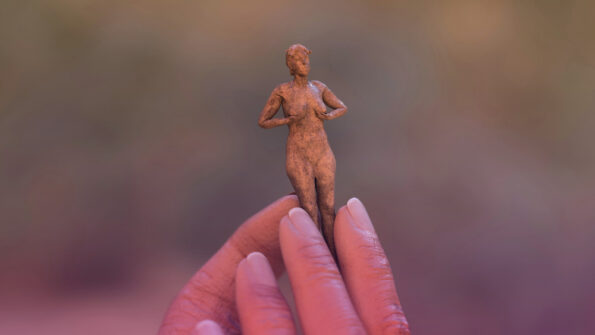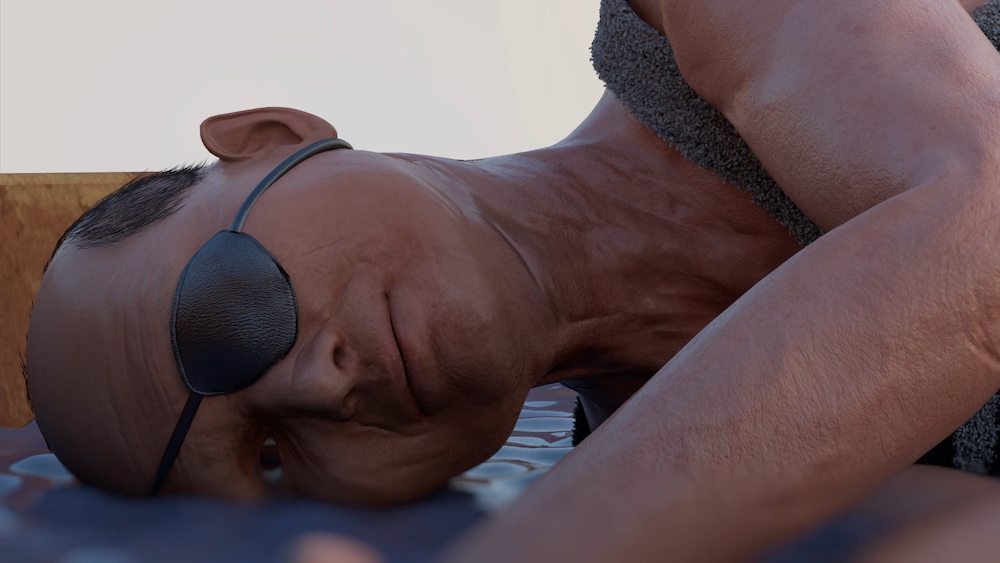Search
To search for an exact match, type the word or phrase you want in quotation marks.
A*DESK has been offering since 2002 contents about criticism and contemporary art. A*DESK has become consolidated thanks to all those who have believed in the project, all those who have followed us, debating, participating and collaborating. Many people have collaborated with A*DESK, and continue to do so. Their efforts, knowledge and belief in the project are what make it grow internationally. At A*DESK we have also generated work for over one hundred professionals in culture, from small collaborations with reviews and classes, to more prolonged and intense collaborations.
At A*DESK we believe in the need for free and universal access to culture and knowledge. We want to carry on being independent, remaining open to more ideas and opinions. If you believe in A*DESK, we need your backing to be able to continue. You can now participate in the project by supporting it. You can choose how much you want to contribute to the project.
You can decide how much you want to bring to the project.

A compelling discussion can result from the merging of historical artifacts and contemporary innovation in an age where technology is constantly changing how art is expressed. In order to examine existing narratives in the fields of feminism and fetishism, Ruth Patir, a visionary artist, revives the past through 3D movies and archaeological artifacts. The body of work by Patir challenges us to consider how archaeology and colonial pillage are used to support and refute current narratives, provoking reflection on the intricate relationships between the past and present.
“Marry Fuck Kill”, 2019
https://vimeo.com/347233017
password: onlyyou
“Marry Fuck Kill” (2019) is a standout piece that showcases Patir’s talent. This piece’s interesting fusion of archaeology and technology may initially seem out of place. The film juxtaposes historical artifacts with current technological artifacts by transplanting archaeological figures, notably the Judean pillar figurines, into the modern environment. The goddesses of fertility and motherhood from Judean times are represented by these figures, which were discovered during archaeological excavations in Israel. They are distinguished by their characteristic chest and pillar configuration. But Patir’s inventiveness rests in how she handles these statues. She breathes life into these terracotta artifacts through animation, transforming them into vehicles for the voices of living people.
The mother of the artist acts as an unexpected conduit for these legendary beings, giving them humour and life. In a curious turn of meetings, Patir interviews her own mother, who reflects on her earlier experiences while weaving gender, care, labour, and technological themes throughout. As Patir’s mother struggles with the realisation that her appearance in the video is mostly due to her gender, rather than her uniqueness, a stunning aspect of this story comes into focus. The tension between the past objectification of women and the current push for empowerment is captured in this juxtaposition.
It’s an effort to uncover the untold stories, to humanise the artefacts, and to challenge the very function they serve in forming the collective consciousness. “Marry Fuck Kill” prompts us to explore the narrative potential of objects trapped in the annals of history.
Her involvement with the Dayan Collection, an immense collection of antiquities that originally belonged to Moshe Dayan, a divisive and extravagant Israeli figure, had a significant influence on Patir’s work. Dayan, who gained notoriety for his participation in the Yom Kippur War, gathered this collection, frequently via illegal manners. The analysis of this collection by Patir is the basis of her larger investigation of the fetishization and objectification of women in both historical and contemporary situations.

Ruth Patir, “Love Letters to Ruth”, 2018, filmstill
“Love Letters to Ruth”
https://vimeo.com/291141728
Password: love and marriage
In “Love Letters to Ruth” (2018), Patir explores the nuanced personality of Moshe Dayan, a well-known general who kept a collection of ancient artifacts. She emphasises Dayan’s machismo and the pervasive military culture of Israeli men by turning him into a 3D avatar. As Dayan’s private letters —originally addressed to his wife Ruth— are modified to address Patir, emphasising the unsettling similarities between her name and that of Dayan’s wife, the work develops a multilayered depth.
But Patir’s emphasis on the female figures in Dayan’s collection gives her art a profound new depth. She destroys the historical context that reduced these figures to ornamental objects of desire by giving them a voice and agency. This reclaiming of power is as much a feminist assertion as it is a response to colonial exploitation. An effective technique in Patir’s artistic toolbox, anachronism allows for a fun yet eerie interaction between the past and the present, thereby bridging the gap between viewers of the present-day and ancient artifacts.
Through Patir’s artistic vision, we are transported into a world where the lines between past and present are fluid. She moves over the complicated terrain of narrative construction’s relationship to archaeology. Unlike earlier Israeli artists who used artifacts from the past to promote a feeling of national identity, Patir follows a different path. She challenges the established narratives by focusing on the underrepresented, unheard, and silent.
Patir’s art is a poignant signal that the narratives we construct from the past are not static; they evolve and transform as we engage with them in a society still dealing with the effects of colonialism. Ruth Patir encourages us to critically reconsider the narratives we inherit and to rethink the potential for agency and empowerment within historical contexts through her ground-breaking integration of technology, archaeology, and feminism. Her work is an example of dynamic storytelling, showing us how even the oldest artifacts can have meaning and resonance in the web of contemporary narratives.
Written by Rebecca Routman, with Adam Broomberg, Melanie Pyne and Dahab Kashi. On behalf of Artists + Allies x Hebron (AAH). AAH is Issa Amro (Hebron) & Adam Broomberg (Berlin)
References:
Aldouby, H. (2022). Appropriating Canaanism: Ruth Patir’s Reanimation of Judean Pillar Figurines. Arts, 11(5), 108. https://doi.org/10.3390/arts11050108
Patir, R. (2023). Selected Works and Exhibitions 2023 [Portfolio]. Retrieved from [https://drive.google.com/file/d/1S6TWEmtW5WYjGb_c81_0RLmRJs-faorC/view]
(Cover foto: Ruth Patir, “Marry Fuck Kill”, 2019, poster)

Artists + Allies x Hebron is activist artistic project and an NGO run by Adam Broomberg @adambroomberg in Berlin, Germany and Issa Amro @issaamro in Hebron, Palestine. And with Hebron as its focal point and olive trees as its subject matter. We aim to support Palestinian Human Rights in an artistic, non-violent, poetic way.
"A desk is a dangerous place from which to watch the world" (John Le Carré)